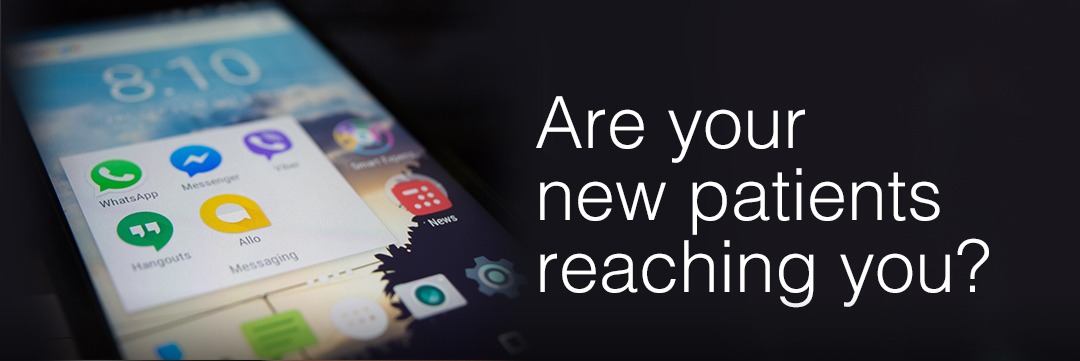Patient retention is important, but practices simply don’t survive without the ability to attract and acquire new patients. Most businesses know this simple fact of survival and appropriately invest in marketing.
Attracting Vs Acquiring
There’s a huge gap between attracting a potential patient and actually acquiring that patient. In other words, even if you’ve invested the time, energy, and finances to get your phone to ring with potential new patients interested in what you’ve advertised through ads, freebies, SEO, and other marketing portals, how many are actually translating into an appointment being booked? Marketing strategies can get new people to call your practice, but it is on your office staff to convert them into patients. Are you confident about their conversion rates?
Patient attainment costs can be high if your practice staff are not able to win over new prospective patients when they first reach out, especially when you consider the efforts that go into even the most basic marketing strategies. It’s imperative that you have a way to measure and track the effectiveness of your in-house staff – how many leads are converted to paying patients – so that you can evaluate where your future efforts are best served.
Evaluate Your Incoming Calls and Phone Etiquette
You should know the up-to-date answers to the following questions:
- How many new patient calls come in per day, per week, per month?
- How many of the above calls book appointments?
Within the above questions, you absolutely must examine your own office personnel and procedures for phone etiquette. Think about it. You, as a client, call an office for a service that peaks your interest and are greeted with disarray, no answer, staff not knowing the answers to your questions, or someone who sounds like they couldn’t care less about your call. Would your interest dwindle? So you also must know:
Responsibility for Phone Calls
- How many staff members have a primary role of telephones?
- How many secondary staff answer the phone? How often do secondary staff answer lines, and is there a clear expectation for them to get to a ringing line before it goes to voicemail?
- Is your front line staffing adequate for your call volume?
- How many calls are going to voicemail? Does your staff immediately call back any number that doesn’t leave a voicemail?
- What’s the average hold time for a call?
- How does your staff handle incoming calls? Are they confident and knowledgeable? Are they using a passive voice, or have they been trained to use an action voice to sell appointments?
The goal here should be for your office to miss 5% or less of its incoming calls and to have a hold time of less than 1 minutes. Per a study by a leading phone provider, most businesses place a disappointing 70% of their callers on hold. 35% of those callers who were put on hold hang up within 45 seconds. This means that If your practice is putting two prospective new patients on hold per day, you could be losing 182 new patient appointments per year. The numbers are even higher for prospective patients who reach a voicemail message instead of your front line staff.
How To Increase Conversion Rates With Phone Training
The Art of First Impressions (TAFI) program is a simple, effective method of increasing your appointment conversion rate. It includes guidance and training to help your staff successfully set appointments and convert leads to patients without sounding scripted. The emphasis is on providing tools that allow your staff to methodically control new patient calls from answer to booking in a consistent, professional, engaging, organized manner.
From new hires, cross training, or staff development, consistency in patient engagement expectations ensures that all staff handling phones (primarily or secondarily) are trained in how to convert calls into appointments. If a dental assistant needs to answer the phone, they should be able to do so without fumbling for an answer, leaving a prospective patient on hold, or telling them someone will call them back.
Some Quick Tips:
- Have clearly communicated expectations for answering phones. Every member of the practice staff should personally feel responsible for ensuring no phone call goes to voicemail.
-
- To ensure that calls will be answered, staffing needs to be built intentionally around peak hours – Mon-Thurs 8a-7p, Friday 8a-12p, and during lunch – which may require an in-house on-call phone carrier.
- Implement consistent tracking and follow-up regarding phone handling. As the practice owner, you should take ownership of knowing what percentage of calls are going to voicemail or being put on hold, as well as tracking what percentage of first time callers are being scheduled for an appointment on that first call.
- Ensure your team knows that their performance will be evaluated. Compare the performance of different front line staff members so that you are able to coach appropriately and evaluate changes in behavior.
- Enroll practice staff in phone coaching. If only one prospective patient is lost per day from being set to hold or voicemail, how much does that loss of 260 patients per year impact your practice? Can you afford not to train your staff on converting calls to patients?
Do you need help creating a strategy for patient conversion with your front line staff? Aim Dental Marketing can help you create a conversion plan and implement team phone training. We will also help you start accurately tracking conversion rates to determine any business model or strategy changes that are necessary. Contact ADM today to learn more about helping your business reach its full potential by converting first time callers into patients.
-Danny Bobrow and the ADM team

